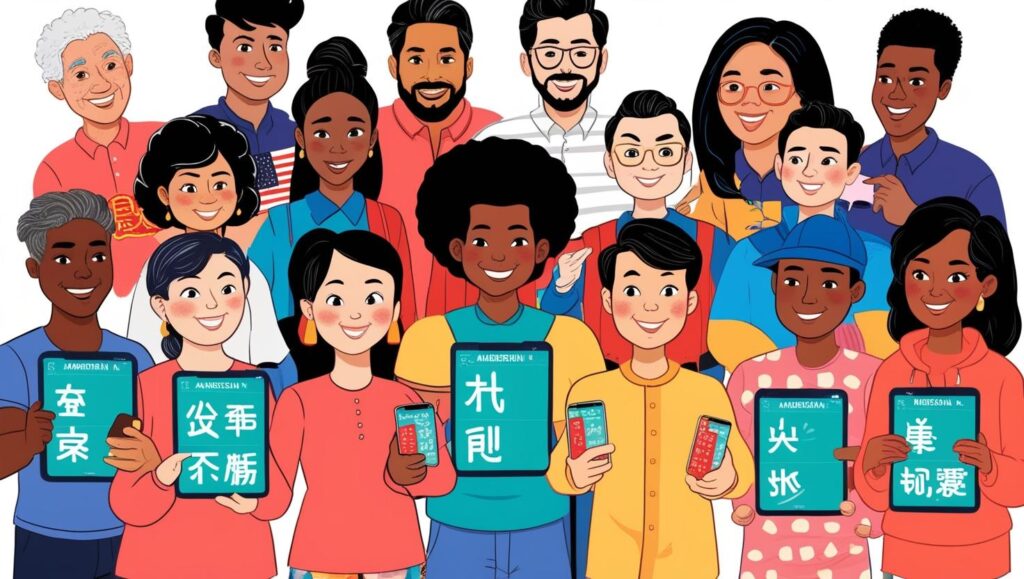
For years, English has been the undisputed lingua franca of social media. Platforms like Facebook, Instagram, and YouTube have connected millions across the globe, with English as the dominant language of interaction. However, the tides may be shifting. The ban of TikTok in the U.S. has unexpectedly sparked a surge in Americans learning Mandarin—not for academic or business purposes, but to navigate alternative Chinese social media platforms and engage with their audiences.
The TikTok Ban and Its Ripple Effects
The TikTok ban in the United States left many “TikTok refugees” searching for alternatives. For some, this has meant venturing into Chinese apps and platforms like Douyin (the Chinese version of TikTok), WeChat, and Xiaohongshu (Little Red Book). According to The Tribune, Duolingo has seen a remarkable 216% increase in U.S.-based users learning Mandarin, particularly those motivated to understand and interact on Chinese social media platforms. This trend is not just about learning a new language but about bridging a cultural and digital divide.
A report from the BBC further underscores the role of social media in driving linguistic shifts. With TikTok unavailable in the U.S., many Americans are exploring the content ecosystems of Chinese platforms, which are rich in Mandarin-based content. To participate fully, these users are compelled to learn Mandarin, a language notoriously challenging for English speakers due to its tonal structure and logographic writing system.
The Influence of Chinese Social Media
Chinese social media platforms are vast, dynamic, and deeply rooted in local language and culture. Unlike global platforms where English predominates, these apps thrive on Mandarin content. For Americans, this presents a unique challenge: without proficiency in the language, engaging with the content and the community is almost impossible.
This has created a strong incentive for U.S. users to invest time in learning Mandarin. Beyond practical utility, there’s also a cultural allure. As Chinese platforms continue to shape global trends in areas like e-commerce, beauty, fashion, and entertainment, engaging with these trends requires not just understanding the language but also immersing oneself in the nuances of Chinese culture.
A New Era for Language Learning
The rise of Mandarin on Chinese social media has disrupted the long-standing dominance of English in the digital sphere. Historically, English has been the gateway to global communication online, enabling users from different countries to share ideas, humor, and stories. However, with the growing popularity of Chinese platforms, Mandarin is emerging as a critical language for digital engagement.
This marks a significant cultural shift. Previously, the motivation for learning Mandarin was often tied to business opportunities or academic pursuits. Today, it’s about staying connected in a rapidly changing social media landscape. Learning Mandarin has become a way to access unique content, build cross-cultural relationships, and remain relevant in a world where Chinese platforms play an increasingly prominent role.
Challenges and Opportunities
For many Americans, learning Mandarin is no small feat. The language’s complexity—its tones, characters, and grammar—can be daunting. Yet, platforms like Duolingo and other online resources have made language learning more accessible than ever before. Social media itself acts as a motivator, offering real-time rewards for progress: the ability to engage with Chinese creators, understand viral trends, and contribute to discussions.
This phenomenon also highlights the broader impact of social media on language dynamics. Platforms are no longer just tools for communication—they are shaping how and why people learn languages. The TikTok ban has unintentionally revealed the extent to which people value connectivity and cultural exchange, even if it means overcoming significant linguistic challenges.
Conclusion: The Future of Digital Communication
While English remains the dominant language of social media, the growing interest in Mandarin among U.S. users signals a potential shift toward a more multilingual digital landscape. The influence of Chinese platforms is undeniable, and their cultural reach continues to expand. Whether this trend will lead to Mandarin becoming a second digital lingua franca is yet to be seen, but it is clear that social media is transforming not just how we communicate but also what languages we prioritize learning.
For now, the surge in Mandarin learners is a testament to the evolving power of social media to shape cultural and linguistic norms. In a post-TikTok era, it seems Americans are willing to rise to the challenge, one character at a time.